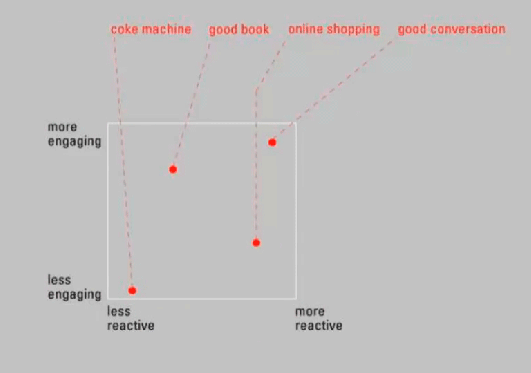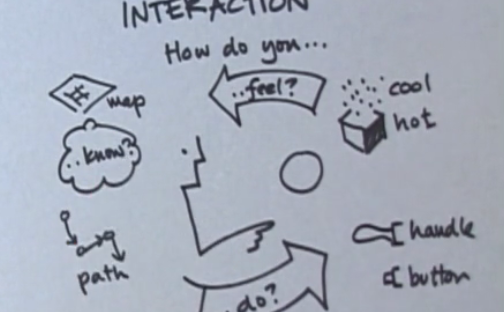What is interaction & interaction design? Everything from a button, to a link, to a form field is part of interaction design.
Interactivity itself is incredibly vague and takes many shapes and forms. It can be a computer program, a book, a vending machine or even a conversation. Interaction design is the design of interactive products for assisting people in their day-to-day lives, and the design of spaces where people can interact and communicate.

Interaction designer and scholar Bill Verplank ascertains that interaction design “focuses on design for people interacting with the world and getting feedback from the world.” He asks three important questions when considering the audience interaction:
How do you
Do? Feel? Know?
These are three basic things that occur in interaction. How the audience manipulates the world and how the world communicates in return, and how the audiences understands how to manipulate and understand feedback from it. This is interactive design in it’s broadest form, an unspecific definition.
To look closer at the various forms of interaction you must view it in context.

There are dimensions to interactive design and how audiences engage with the world in different circumstances. The diagrams above show how engaging and reactive certain things are in different sizes and environments. This ties into interactive design and gives the young interactive designer a broader scope of things to factor into when designing. There isn’t a one size fits all lens when creating interactive design and the audience must be carefully considered when tailoring a product toward them.
Gillian Crampton Smith believes that good interaction design is interaction without the user consciously thinking about the interaction. She says interaction design is “about shaping our everyday life through digital artifacts for work, play or entertainment…”, her comment makes you realize we’re surrounded by interaction design and we would have our quality of life greatly decreased without it.
What I’ve taken most of all from this lecture pod is considering the audience and what they know. Designers must think of their target audience’s experience above all and the level of knowledge they have with interacting with products.

